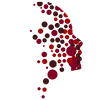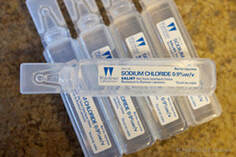Most tracheostomy patients are prescribed a suction machine when returning home following surgery. Use of the suction will be helpful in removing mucous and other secretions from the tube, ensuring a clear airway.
Despite having a suction machine, it is important to use a simultaneous strong cough. Without strong and forceful coughs, mucous will not be cleared adequately from lower portions of the airways.
Many patients find it helpful to use saline bullets to assist with clearing/suctioning of their secretions. Use of saline bullets can significantly help to thin the secretions while also moisturizing the airways. In this sense, coughing/suctioning can be much easier. If you find it is difficult to clear your mucous/secretions from your tracheostomy tube, even with using suction, it may be helpful to use saline bullets to assist in this regard. Your doctor or SLP staff can discuss this further with you.
Despite having a suction machine, it is important to use a simultaneous strong cough. Without strong and forceful coughs, mucous will not be cleared adequately from lower portions of the airways.
Many patients find it helpful to use saline bullets to assist with clearing/suctioning of their secretions. Use of saline bullets can significantly help to thin the secretions while also moisturizing the airways. In this sense, coughing/suctioning can be much easier. If you find it is difficult to clear your mucous/secretions from your tracheostomy tube, even with using suction, it may be helpful to use saline bullets to assist in this regard. Your doctor or SLP staff can discuss this further with you.
Saline Bullets
A saline bullet is a term used to describe a small vial of sterile saline. These can range in size from 5-30ml, although the physicians/SLP staff will typically advise the 30 ml size for use.
Indications: Saline bullets are used to provide quick, temporary moisture to the pulmonary air passages and lungs and are most commonly used to correct issues related to inadequate humidification for tracheostomy patients not regularly using HMEs. Saline bullet utilization can be helpful in loosening dried mucous and mucous plugs as well as restoring moisture to dry airways. These should only be used on the advice of your doctor or SLP staff.
Directions for Use (with 30ml vial): Position the tip of the vial into the opening of the tracheostomy tube (speaking valve/HME removed). While inhaling, squeeze firmly on the vial, releasing ~1/3 or 10ml at one time. This will likely cause coughing. After secretions have been cleared, repeat this until the vial is empty, usually 3-4 times in total. It may be helpful to use suction during this procedure to better help clear mucous from the tube.
It is important to use saline bullets in the morning. This will help to moisturize the air passages and clear any dry secretions that may have formed during sleep, so you can be more comfortable through your day. Your doctor or SLP staff will advise you on how often and when to use saline bullets if you require more that once daily. These can be used safely more than once daily, but you may be prescribed a specific schedule.
Keep it clean
Because the tracheostomy now provides a direct pathway into the lungs, it is important to always keep your suction components as clean as possible. Emptying the canister regularly as well as changing the suction tubing/attachments according to the manufacturer’s recommendations is extremely important in this regard.
Although various suction machines exist, regardless of the model you are provided with, instructions for proper care and operation will always be included. Once you read through these, the SLP staff can assist you in a better understanding if needed.
Generally speaking, however, the tip of the suction, can serve as a way of introducing bacteria into your tracheostomy tube. Although your tube is not a sterile environment, keeping the tube and suction as clean as possible will help to minimize the potential for bacteria/viruses from entering the lungs this way. Whether you are using a Yankauer tip or suction catheter, you should never allow the tip of your suction (the part you touch the tracheostomy tube with), to come in contact with soiled surfaces. Placing the tip in a clean sandwich bag or glass can help ensure it is somewhat protected between uses. Never use the suction if the tip (Yankauer/catheter) is visibly dirty or touches the floor/other similarly soiled surfaces without first properly cleaning or even replacing if adequate cleaning is not possible.


